Chapter 6. Lipids
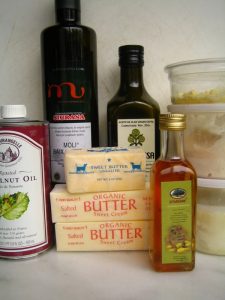
Chapter Outline
- 6.1 Fatty Acids
- 6.2 Triacylglycerols
- 6.3 Phospholipids
- 6.4 Steroids
Introduction
Lipids include a diverse group of compounds that are largely nonpolar in nature. This is because they are hydrocarbons that include mostly nonpolar carbon–carbon or carbon–hydrogen bonds. Non-polar molecules are hydrophobic, or insoluble in water. Lipids perform many different functions in a cell. Cells store energy for long-term use in the form of fats. Lipids also provide insulation from the environment for plants and animals (Figure 6.2). They help keep aquatic birds and mammals dry. Lipids are also the building blocks of many hormones and are an important constituent of all cellular membranes. Lipids include fats, oils, waxes, phospholipids, and steroids.

5.1 | Fatty Acids
Learning Objectives
By the end of this section, you will be able to:
- Label the structural components of a fatty acid.
- Explain why saturated and trans unsaturated fatty acids are solids at room temperature and cis unsaturated fatty acids are liquids.
Fatty acids are building blocks in several other types of lipids. They have a long chain of hydrocarbons to which a carboxyl (carboxylic acid) group is attached, hence the name “fatty acid.” The number of carbons in the fatty acid may range from 4 to 36; most common are those containing 12–18 carbons. Some fatty acids have common names that specify their origin. For example, palmitic acid, is derived from the palm tree. Arachidic acid is derived from Arachis hypogea, the scientific name for peanuts.
Fatty acids may be saturated or unsaturated. In a fatty acid chain, if there are only single bonds between neighboring carbons, the fatty acid is said to be saturated. Saturated fatty acids are saturated with hydrogen; in other words, the number of hydrogen atoms attached to the carbon skeleton is maximized. Stearic acid is an example of a saturated fatty acid (Figure 6.3). When the hydrocarbon chain contains a double bond, the fatty acid is said to be unsaturated. Oleic acid is an example of an unsaturated fatty acid (Figure 6.4).


If there is one double bond in the molecule, then it is known as a monounsaturated fat (e.g., olive oil), and if there is more than one double bond, then it is known as a polyunsaturated fat (e.g., canola oil).
The double bonds found in unsaturated fatty acids can be in either a cis or trans configuration. In the cis (“same”) configuration, both hydrogen atoms are on the same side of the carbon chain, which results in a bend in the chain. As a result, the fatty acids cannot pack tightly together and therefore form a liquid, or oil, at room temperature. On the other hand, fatty acids in the trans (“across”) configuration, the hydrogen atoms are on opposite sides of the carbon chain. Like saturated fatty acids, trans unsaturated fatty acid chains are straight and pack tightly together, and therefore form a solid, or fat, at room temperature (Figure 6.5).
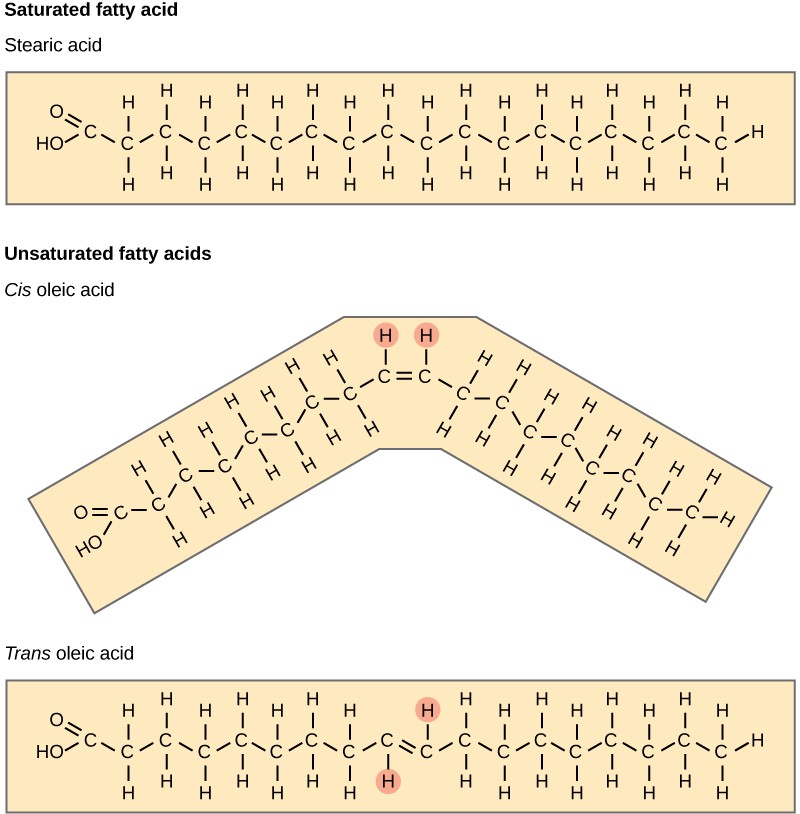
Trans Fats
In the food industry, oils are artificially hydrogenated to make them semi-solid and of a consistency desirable for many processed food products. Simply speaking, hydrogen gas is bubbled through oils to solidify them. During this hydrogenation process, double bonds of the cis– conformation in the hydrocarbon chain may be converted to double bonds in the trans– conformation.
Margarine, some types of peanut butter, and shortening are examples of artificially hydrogenated trans fats. Recent studies have shown that an increase in trans fats in the human diet may lead to an increase in levels of low-density lipoproteins (LDL), or “bad” cholesterol, which in turn may lead to plaque deposition in the arteries, resulting in heart disease. Many fast food restaurants have recently banned the use of trans fats, and food labels are required to display the trans fat content.
Omega Fatty Acids
Essential fatty acids are fatty acids required but not synthesized by the human body. Consequently, they must be supplied by the diet. Omega-3 and omega-6 fatty acids are the only two essential fatty acids known for humans. Omega-3 fatty acids are so named because the third carbon from the end of the hydrocarbon chain is connected to its neighboring carbon by a double bond (Figure 6.6).
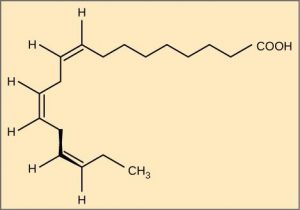
Omega-3 fatty acids include alpha-linoleic acid (ALA), eicosapentaenoic acid (EPA), and docosahexaenoic acid (DHA), all of which are polyunsaturated. Salmon, trout, and tuna are good sources of omega-3 fatty acids. Research indicates that omega-3 fatty acids reduce the risk of sudden death from heart attacks, reduce triglycerides in the blood, lower blood pressure, and prevent thrombosis by inhibiting blood clotting. They also reduce inflammation, and may help reduce the risk of some cancers in animals.
5.2 | Triacylglycerols
Learning Objectives
By the end of this section, you will be able to:
- Label the structural components of triacylglycerols and state their biological function.
A fat molecule, also called triacylglycerols or triglycerides, consists of two main components—glycerol and fatty acids. Glycerol is an organic compound with three carbons and three hydroxyl (OH) groups. In a fat molecule, the fatty acids are attached to each of the three hydroxyl groups of the glycerol molecule, forming ester bonds (Figure 6.7). Each ester bond forms by a dehydration synthesis reaction, forming a water molecule.
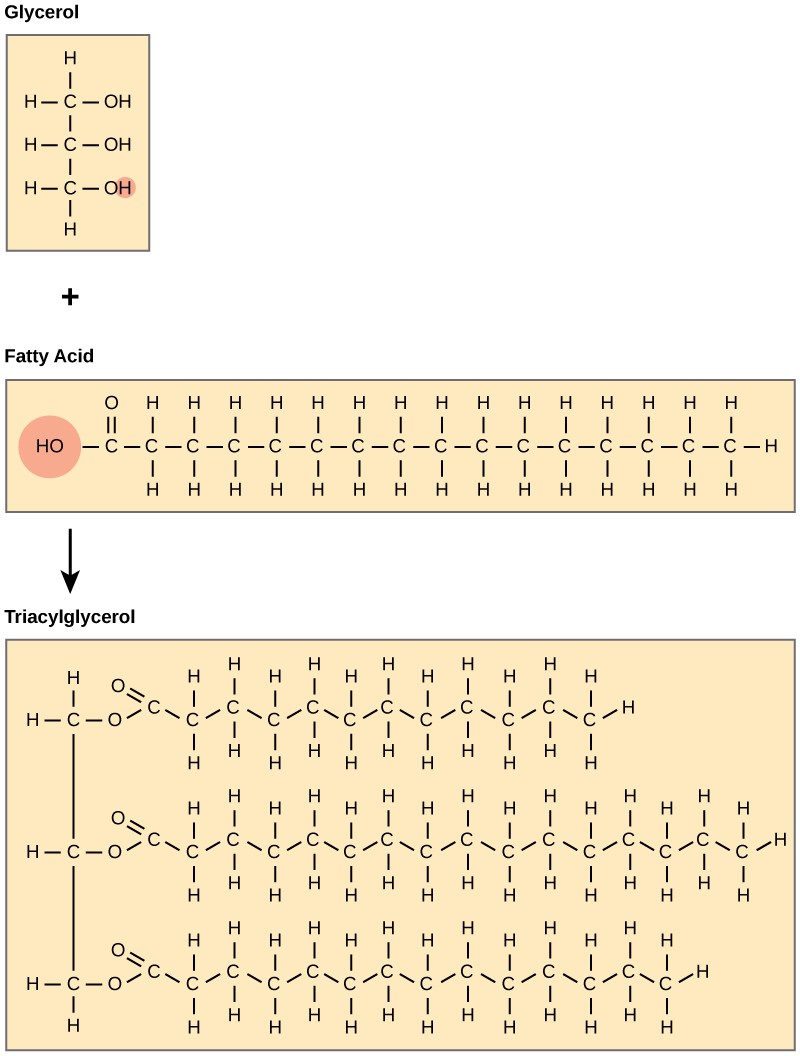
Mammals store fats in specialized cells called adipocytes, where globules of fat occupy most of the cell’s volume. In plants, fat or oil is often stored in seeds and is used as a source of energy during seedling development. Unsaturated fats or oils are usually of plant or fish origin. Olive oil, corn oil, canola oil, and cod liver oil are examples of unsaturated fats.
Saturated fats usually occur in animals, and are found in meat and milk (butter). In humans, unsaturated fats help to lower blood cholesterol levels whereas saturated fats contribute of plaque formation in the arteries.
Like carbohydrates, fats have received a lot of bad publicity. It is true that eating an excess of fried foods and other “fatty” foods leads to weight gain. However, fats do have important functions. Many vitamins are fat soluble, and fats serve as a long-term storage form of fatty acids: a source of energy. They also provide insulation for the body. Therefore, “healthy” fats in moderate amounts should be consumed on a regular basis.
5.3 | Phospholipids
Learning Objectives
By the end of this section, you will be able to:
- Label the structural components of a phospholipid.
- Explain how the structure of phospholipids leads to their biological function in membranes.
Phospholipids are major constituents of the plasma membrane, the outermost layer of animal cells. Like fats, they are composed of fatty acid chains attached to a glycerol backbone. Instead of three fatty acids attached as in triglycerides, however, there are two fatty acids and a modified phosphate group (Figure 6.8).
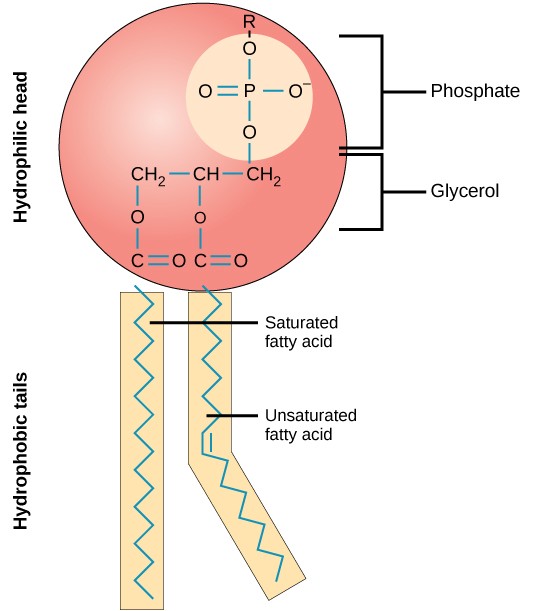
A phospholipid is an amphipathic molecule, meaning it has a hydrophobic and a hydrophilic part. The “head” is composed of the hydrophilic phosphate group, and the “tail” contains the hydrophobic fatty acids. In a membrane, a bilayer of phospholipids forms the matrix of the structure, the fatty acid tails of phospholipids face inside, away from water, whereas the phosphate group faces the outside, aqueous side (Figure 6.9).
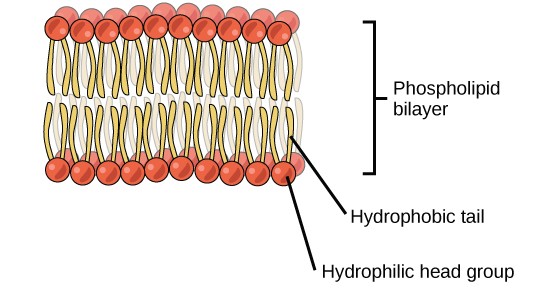
Phospholipids are responsible for the dynamic nature of the plasma membrane. If a drop of phospholipids is placed in water, it spontaneously forms a structure known as a micelle, where the hydrophilic phosphate heads face the outside and the fatty acids face the interior.
5.4 | Steroids
Learning Objectives
By the end of this section, you will be able to:
- Name the four major types of lipids.
- Recognize the basic structure of a steroid and name some functions of steroids.
Unlike the phospholipids and fats discussed earlier, steroids have a fused ring structure. Although they do not resemble the other lipids, they are grouped with them because they are also hydrophobic and insoluble in water. All steroids have four linked carbon rings and several of them, like cholesterol, have a short tail (Figure 6.10). Many steroids also have the –OH functional group, which puts them in the alcohol classification (sterols).
Cholesterol is the most common steroid. Cholesterol is mainly synthesized in the liver and is the precursor to many steroid hormones such as testosterone and estradiol, which are secreted by the gonads and endocrine glands. It is also the precursor to Vitamin D. Cholesterol is also the precursor of bile salts, which help in the emulsification of fats and their subsequent absorption by cells. Although cholesterol is often spoken of in negative terms by lay people, it is necessary for proper functioning of the body. It is a component of the plasma membrane of animal cells and is found within the phospholipid bilayer.


